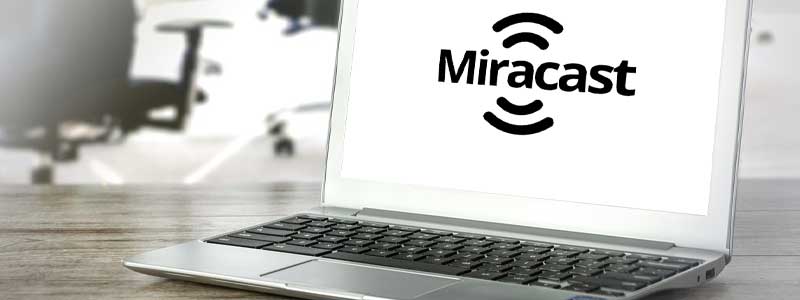Screencasting to a Tv, a projector, or any other device is a very important tool that can be used for various purposes. It is the process of sending and extending the display of Laptop, Mobile, and Mac devices to the TV.
Top Rated Budget Laptops
Last update on 2025-06-28 / Affiliate links / Images from Amazon Product Advertising API
There are two terms which often confused with each other, and used interchangeably:
- Screen Casting
- Screen Mirroring
So, let’s see the difference between both the terms that what are these? and how they are different from one another.
Screen Casting: The process of playing the content from the device to the TV directly, without engaging the source device we are casting from.
Screen Mirroring: It is the process of duplicating the display of the source device on a TV with the help of a cable or wireless connection.
We can perform screen mirroring with an HDMI cable or via a wireless medium. In the case of wireless screen mirroring both the source and destination, devices must be connected to the same WIFI. Although wired screen mirroring is safe and straightforward, wireless screen mirroring gives us the convenience of a cable-free environment.
What are the devices that support screencast?
There are many devices that support screencast, but to understand them effectively we can divide screen cast devices into two categories:
- Source Devices
- Destination Devices
Source Devices: All the devices that use to cast or send the content are called source devices. These devices normally are as follows:
- Mobile
- Laptop
- Tablet
- iPad
- Desktop
- Mac Devices
- Windows Devices
Destination Devices: All the devices which use to get the output fall into this category, such as
- TV
- Monitors
- Projector
What content we can screencast?
As far as the content is concerned for casting on a screen, it totally depends on our desire that what we want to replicate or display on a bigger screen. Normally we required screencasting for the following content:
- Photos
- Videos
- Games
- Movies
- TV Shows
- Music
- Documents
- Audio-Video Conferencing (Zoom, Skype, MS Teams, etc.)
What are the Operating Systems that support screencast?
There are the following operating systems that support screencast functionality, such as
Note: This procedure is Microsoft environment specific and will be valid on devices with Microsoft-based operating systems only.
Before moving on any further, let’s investigate why do we need to mirror our screens or cast our screens with any device.
Why do we need ScreenCast?
As we have already discussed that what is screen cast and what is the difference between screen mirroring and screencasting. Now let’s explore various conditions in which we need to cast or share our screen over an external output device. Some of the reasons are as follows:
- When we share the content on our laptop with a huge crowd.
- When we want to enjoy movies and shows running on our mobile or laptop
- When we want to play games over a bigger display
- When we are collaborating with a remote team.
- When we want to have a discussion over a document, or we have a presentation.
So, above are some conditions in which we need to cast our content over a relatively bigger display.
Procedure:
We have several ways of sharing our Laptop, Mobile display over a bigger screen. In this article, we will try to discuss each one of them.
The most used methods for sharing content over larger display are as follows:
- With the help of Wireless Casting
- With the help of HDMI Cable
- With the help of VGA Cable
- With the help of a specialized hardware
All the methods will provide the same result based on any kind of laptop such as hp laptop, dell laptop, Lenovo laptop, or many more. Now let’s explore the methods one by one:
Method # 1: With the Help of Wireless Casting
Before we see the actual method let’s talk about the standard which supports wireless casting.
Miracast
This is a standard introduced in 2012 by WIFI Alliance. Miracast allows wireless connection between sending and receiving devices. Because of this, the source devices such as mobile, laptops, desktops, tablets, and MacBooks can project themselves to a receiving device like TVs, monitors, and projectors.
Now let’s see the actual procedure how can we share the screen wirelessly or share our zoom meetings wirelessly.
Wireless Casting with the help of Windows
This method is straight forward in this we have performed the following settings:
TV Settings
Step # 1:
Turn on the Smart TV and go into “Menu” by pressing the Menu button
Step # 2:
Now select “Network”
Step # 3:
Select “Network Settings”
Step # 4:
Select “Network Type” wireless.
Step # 5:
Now select the desired “Wireless Connection” and enter its “WEP Key”.
Once the TV is connected to Wireless Network now, we need to perform settings on the Laptop.
Laptop Settings
Step # 1:
Connect the Laptop with the same WIFI (on which TV is connected)
Step # 2:
Now press the “Start” button from here select “Settings”
Step # 3:
Click “Devices” a new window pops up
Step # 4:
On this window select “Bluetooth & other devices”
Step # 5:
From herethere is another section named “Audio and other devices” whereour device is listed.
Step # 6:
We just need to select our display device.
Step # 7:
Now we can toggle the option by pressing the “Windows + P” key as per our need that whether we want to duplicate the display or extend it.
Once the system is successfully connected with an external display all we need to run the zoom meeting.
Note: Window 10 which upgraded from a previous version sometimes does not support Miracast. To confirm press “Start” and then go to “Connect”
For the above-mentioned issue, we can use third-party Miracast adapters which will be discussed later in this article.
Method # 2: With the help of HDMI Cable
This is a straightforward and safe method to share or cast the Laptop screen with the TV. In this method we need the following things
- HDMI Cable
- Adaptors (optional: only required if Laptop does not support HDMI port)
- HDMI ports on both sides (TV and Laptop)
Let’s have a look at sharing zoom with the help of an HDMI cable.
Step # 1:
Take the “HDMI cable” and put it into the HDMI port of the TV.
Step # 2:
Connect the other end of the “HDMI cable” with the Laptop’s HDMI port.
Note:
If the Laptop does not have an HDMI port, then we can use appropriate adapters like
- VGA to HDMI adapter
- DVI to HDMI adapter
The use of the above adapters totally depends on the available port of the laptop.
Step # 3:
Now press “Fn” + an appropriate “function key” this will duplicate the display
Another method of performing the same function in Windows 10 is as follows:
- Press the “Windows + X” key and select the “Control Panel” option
- Select “Display” under “Appearance and Personalization” section
- Click the “Multiple displays” drop-down menu and select “Duplicate these Displays”
- Click “OK” and we are all done here.
Note:
Although we are casting our screens over the TV it just gives us the bigger display and sound but for video conferencing or zoom meeting sharing, we need to use the Laptop microphone or microphone which is attached to the laptop.
Method # 3: With the Help of VGA Cable
We can also cast the screen with the help of a VGA cable, which is like the HDMI cable procedure, but the only difference is that we need an extra “Aux” wire to cast the audio over the external source. This Aux cable connects with the speaker port of the laptop and TV.
The rest of the procedure will remain the same.
Method # 4: With the Help of Specialized Hardware
We can smart cast our Laptop to a smart tv with various specialized hardware as well. Following are some of the hardware which helps us in casting our screen to the TV.
- Google Chromecast
- Microsoft 4K display adapter
- IOGear Mobile and PC to an HD TV receiver
- MiraScreen G9 plus 5G
- Roku Express
- Apple TV 4K
Google Chromecast: This device supports the Miracast standard and can be attached to the tv via HDMI port. It is compatible with several devices such as Android, Windows PCs, Mac, Chromebooks, iOS, etc. It supports 1920 x 1080P resolution which could be extended up to 3840 x 2160.
We can cast zoom meeting with google Chromecast in a convenient way. For this we have two ways:
- we share the whole desktop and then connect zoom meeting,
- we can connect the zoom meeting over our laptop and once all the participants joined the meeting, we just need to open google chrome and from the upper right corner select three dots, and from here select “Cast”. After this select the zoom meeting window and press share.
By the above methods, we are able to smart cast our zoom meeting over TV.
Microsoft 4K Display Adapter: This device has the capability to mirror various devices from Microsoft Surface to an Android phone. It wirelessly shares the screen on a resolution of 3840 x 2160. On one hand, it quite comfortably mirrors the screen of android and Microsoft devices but it does not support Macs, iOS, & Chromebooks.
IOGear Mobile and PC to HD TV receiver: Another powerful hardware that helps us in screen mirroring is IOGear which can connect our devices even when they are 50 feet apart. It connects devices on both 2.4 GHz and 5 GHz bands. The downside of this hardware is that it can not provide a higher resolution while connecting Macs, Chromebooks, iPhones, iPads.
MiraScreen G9 plus 5G: With the support of Miracast, Chromecast, AirPlay, and other standards it connects many devices. Although it seems tiny in comparison to IOGear and others still it has a wide range of compatibility with the ultra-high-resolution result.
Roku Express: These devices are very popular among people for their streaming TV capabilities, but it is also a great fit for screen sharing. With the support of 2.4GHz and 5GHz bands, it can connect with Windows PCs and Android devices which means there is no support of MAC PCs, iOS, and Chrome devices.
Apple TV 4K: This device is specifically used to connect apple products with the tv. It supports both the bands 2.4 GHz and 5 GHz over which we can have 3840 x 2160P resolution.
Above are some of the hardware that can use to smart cast the system over a TV.
Closing Statement:
In this article, we have tried to cover all the ways to smart cast the Laptop over a TV. We have seen all the ways such as wireless, wired, or with the help of specialized hardware.
Hope you will find this article informative and engaging.
References:
- What is Screen Mirroring | How Does it Work? – iStreamer
- Miracast – Wikipedia
- How to easily connect your laptop to your TV | Asurion
- Connecting laptop to the TV with just a few simple steps | | Resource Centre by Reliance Digital
- How to Cast a Zoom Meeting to Your TV (lifewire.com)







